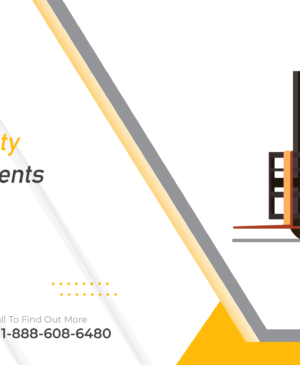Well
When we find ourselves rattled while speaking — whether we’re nervous, distracted, or at a loss for what comes next — it’s easy to lean on filler words. These may give us a moment to collect our thoughts before we press on, and in some cases, they may be useful indicators that the audience should pay special attention to what comes next. But when we start to overuse them, they become crutches — academics call them disfluencies — that diminish our credibility and distract from our message.
Using research that incorporates behavioral science, AI, and data, the people science firm I run, Quantified Communications, determined that the optimum frequency is about one filler per minute, but the average speaker uses five fillers per minute — or, one every twelve seconds.
So let’s take a look at what the data tells us about crutch words: how they jeopardize a speaker’s impact and how we can eliminate them from our vocabularies.
The Trouble with Crutch Words
We know it’s hard to pay attention to a speaker when every third word is a filler, but it can be difficult to pinpoint exactly how those verbal crutches are affecting our experience. We analyzed over 4,000 spoken communication samples in our database to identify how much speakers are relying on filler words and how those words are affecting the way their audiences perceive them. While we found that the excessive use of fillers can negatively influence audiences in many ways, three critical factors are significantly negatively correlated with too many fillers.
To get your message across effectively, you have to keep your audience engaged. When you use excessive fillers, audiences are less likely to hang onto your every word because the fillers get in the way of the emotional stories or fascinating research you’re trying to share.
Audiences want to believe that you are acting and speaking naturally — the way you might in a one-on-one conversation. While of course most people use fillers in casual conversation, when you bring them with you to the microphone, they distract from your core personality and make you sound nervous, distracted, or disengaged rather than authentic.
If you want your audience to buy into your message, you have to make it clear, logical, and easy to follow. Unfortunately, filtering through crutch words to catch the important parts requires more cognitive effort than audiences are willing to put forth. So too many fillers will likely mean they’ll tune out in favor of an easier cognitive task —such as thinking about their to-do lists.
So why isn’t our speech fluent? Studies suggest that we verbalize hesitations because we’ve been conditioned to fill the void even when we don’t have something to say. For example, we use “um” and “ah” to hold onto the “conversational floor” as we are planning what we are going to say next, with “ah” signaling a short delay and “um” signaling a longer delay.
To Eliminate Crutch Words, Embrace the Pause
The good news is that you can turn this weakness into a strength by replacing fillers with pauses.
Research suggests that most conversational speech consists of short (0.20 seconds), medium (0.60 seconds), and long (over 1 second) pauses. Great public speakers often pause for two to three seconds or even longer. Our phonetic data shows that the average speaker only uses 3.5 pauses per minute, and that’s not enough.
YOU AND YOUR TEAM SERIES
[embedyt] https://www.youtube.com/watch?v=vpXGZ5ysJOA[/embedyt]
Public Speaking
This is understandable. Pauses aren’t easy to embrace. For many speakers, even the briefest pause can feel like an interminable silence. That’s because we tend to think faster than we speak. According to our research, the average professional speaks at a rate of 150 words per minute. Yet, according to research from Missouri University, we think at 400 words per minute (and depending on who you ask, the rate may be as high as 1,500 words per minute).
Because of this discrepancy, when you’re giving a speech, your perception of time is often distorted, and what feels like an eternity in your mind is actually a few short seconds for the audience.
Despite how they may feel at first, well-placed pauses make you sound calm and collected, and they help three ways:
Collect your thoughts: If you lose your train of thought, a pause gives you time to get back on track. As long as the pause isn’t too long (no more than five seconds), the audience won’t hold it against you.
Calm your nerves: Taking a pause before starting a speech is especially important for people with a fear of public speaking, as it helps calm nerves. The tactic is useful in the middle of a speech as well. If you find yourself getting flustered, pause briefly to take a deep breath (as long as it’s not audible or obvious) and reset.
Build suspense: Pauses aren’t always a defensive tactic. Strategically placed silence can build suspense, emphasize a point, or give the audience time to absorb a key insight.
Like filler words, pauses give you a chance to take a break and figure out what comes next. However, a pause makes you sound confident and in control, whereas overused filler words are distracting and make you sound as if you don’t know what to say.
Three Steps to Silencing Crutch Words
The first step in changing any habit — whether it’s biting your nails or peppering every sentence with “you know” — is awareness. To identify your crutch words, videotape or review a transcript of your most recent talk, and determine what vocal fillers you rely on most. Once you’re aware of them, you’ll likely start to hear these words in your day-to-day communication. Pair your crutch words with small actions. Every time you catch yourself saying “like,” for example, tap your leg. Or have a family member or close friend monitor your filler words and bring your attention to them with a clap or snap.
Next, once you’ve become cognizant of your filler words as they try to escape your lips, begin forcing yourself to be silent. To practice, set up a video to record, and talk about what you did from the beginning to the end of the day. Practice using pauses instead of filler words as you recall the events.
Finally, I can’t stress the importance of preparation enough. Nerves are one of the biggest reasons people overuse vocal fillers. The less prepared you are, the more nervous you’ll be, which will likely cause you to speak too quickly, trip over your words, and forget what’s next. So practice. On average, the optimal ratio of preparation to performance is one hour of practice for every minute of presentation, but at the very least, Dr. Trey Guinn, one of our communication experts, recommends speakers get in at least three full runs before stepping in front of an audience.
Used sparingly and effectively, filler words can make you more relatable to your audience, give you time to catch your breath, and emphasize key points. That’s why Google built fillers into the latest version of its AI assistant, Duplex. But when they become crutch words, used out of nervousness or lack of preparation, they hurt your credibility. As you prepare for your next presentation, identify the words you lean on most, and train yourself to avoid them. Then, next time you’re in front of an audience, use silence to gather your thoughts, rather than filling the air with sound.
Brandon Hardison – Champion Strategies










Leave a Reply